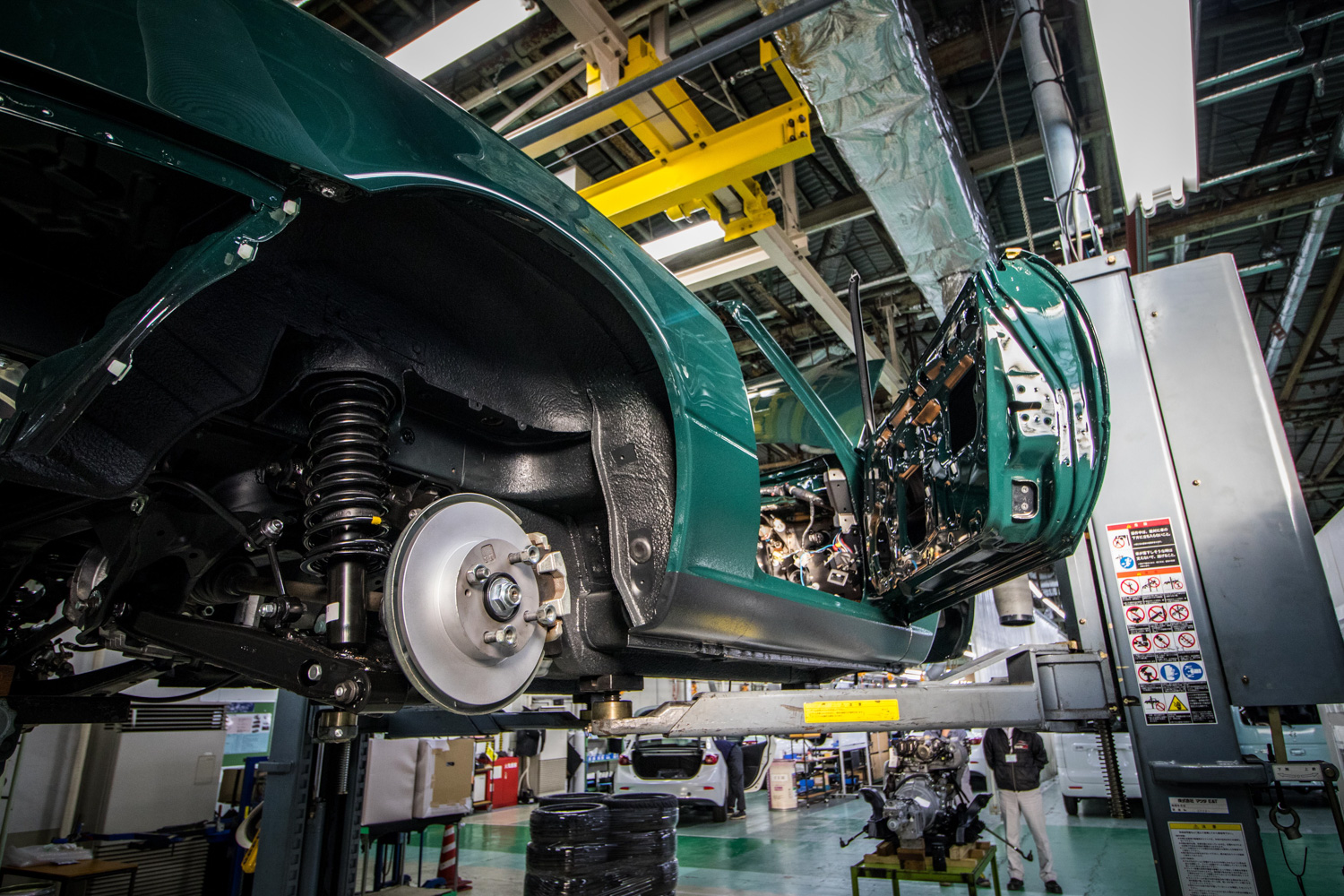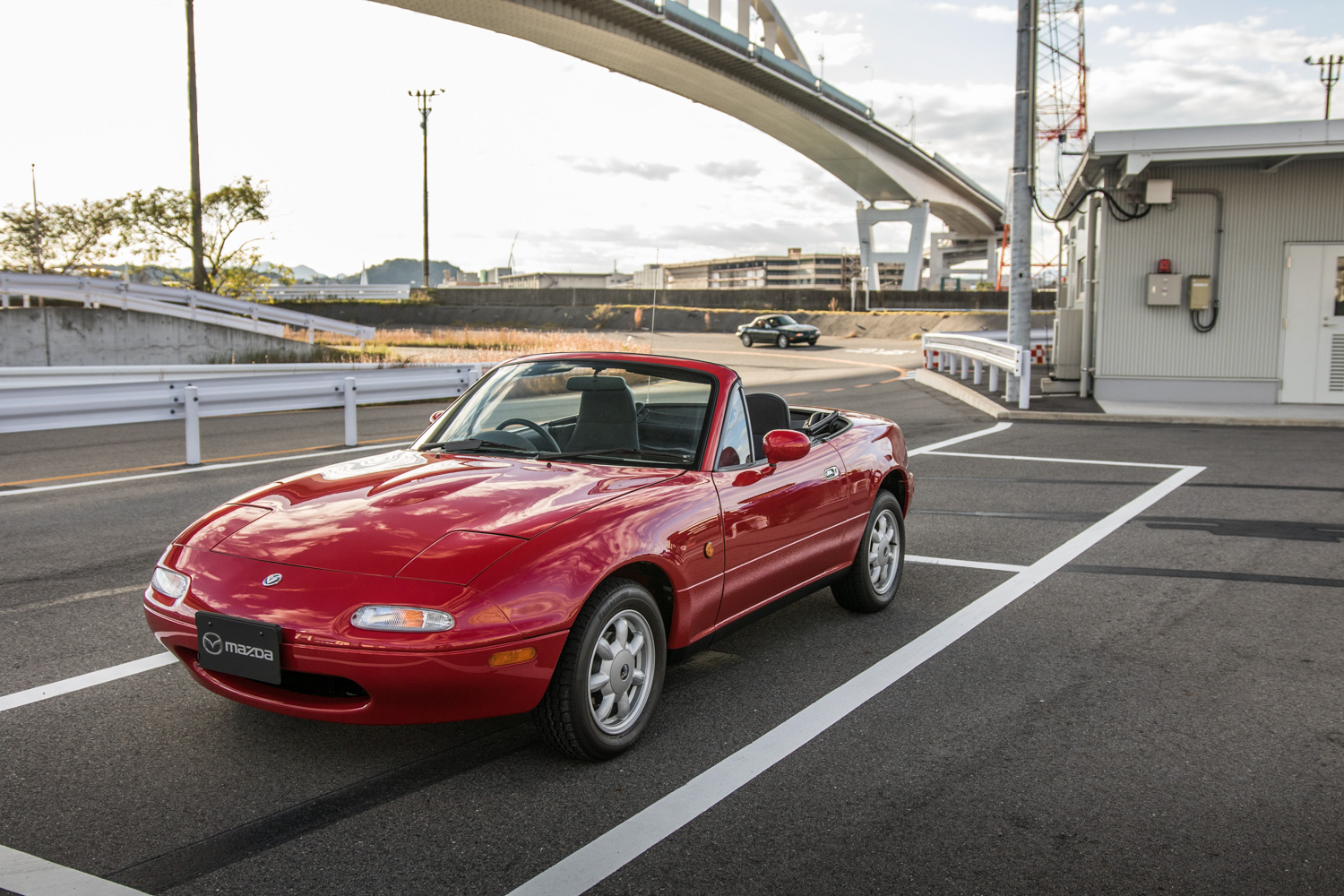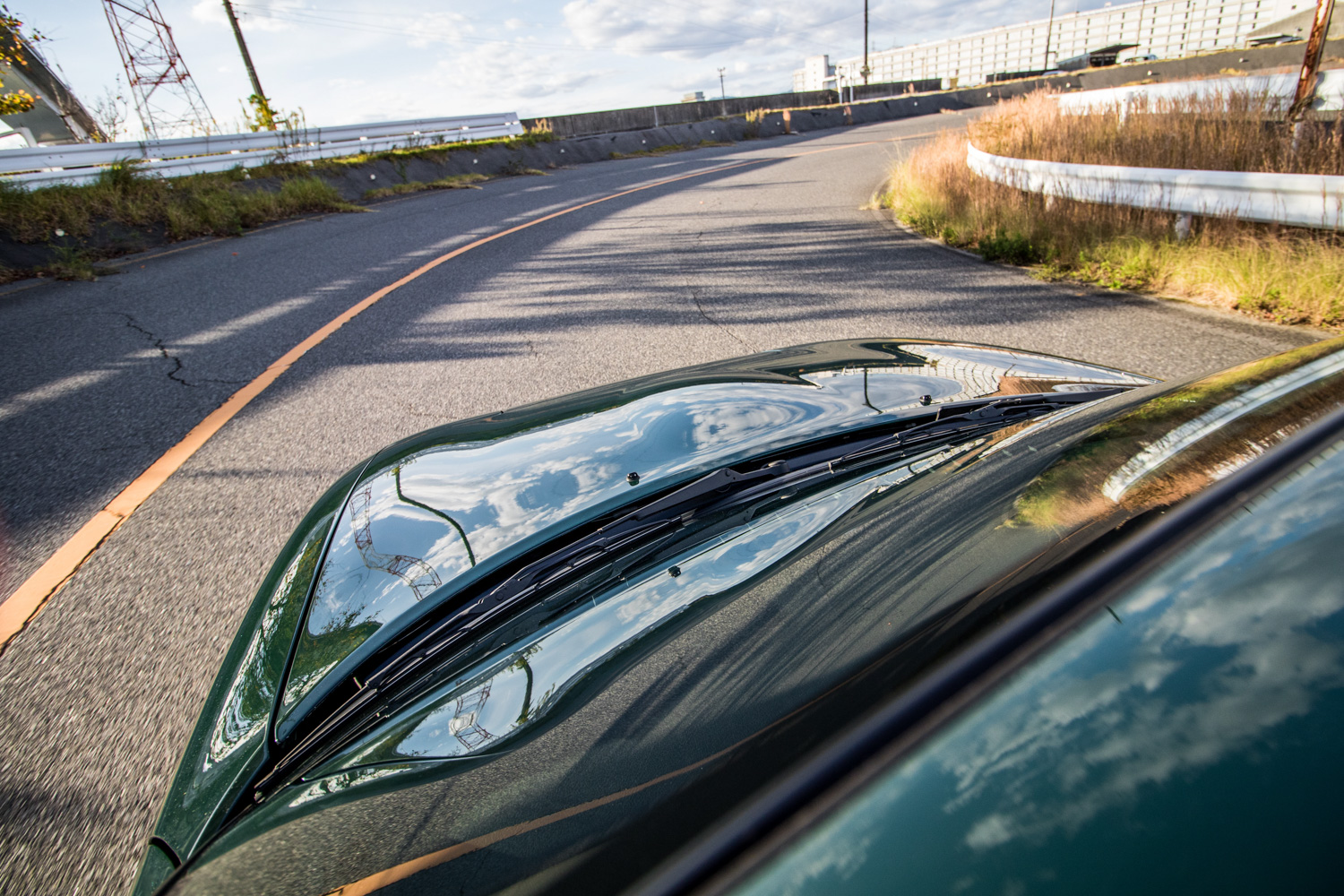This Mazda-restored Miata may be the most perfect example out there
Ikuchi Island, Hiroshima Prefecture, Japan—Keiji Nishimoto is making tea. He measures out the green matcha with a bamboo spoon, adds hot water, then whisks it thoroughly and carefully before handing the bowl over to his guest. Ritual is important: lift and cup the bowl in the left hand, turning it clockwise with the right, once, twice, three times. A little too far. Nishimoto-san chuckles, “Oversteer.”
In Nishimoto-san’s kitchen, chanoyu, the tea ceremony, is a carefully preserved part of Japanese culture, available to everyone. Parked in his driveway is another carefully preserved piece, a dark green Eunos Roadster. Better known to westerners as the Mazda Miata, this particular example is the first customer-delivered car from Mazda’s in-house restoration program. Stripped, repainted, and painstakingly reassembled with brand-new or refreshed parts over the course of months, it is indisputably the finest Miata in private hands today.
That thousand-year old traditions are revered makes perfect sense; that a small, mass-produced car from 1992 has been treated with the same care and attention seems a little strange. This is especially true in Japan, a nation which reveres its ancient shrines and feudal castles, but taxes vintage cars heavily in an attempt to force owners into taking them off the road.

Mazda’s in-house restoration program is a timely attempt to change the minds of the powers that be, and an act of passion for their beloved roadster. Roughly one-sixth of the original NA-chassis two-seaters sold are still on the road in Japan, and Mazda is looking to preserve the very best of them, improve the availability of service parts to keep original examples on the road, and show Japanese transportation authorities that old cars deserve to be honored, too.
Speaking through interpreters at Mazda’s Hiroshima headquarters, program spokesman Nobuhiro Yamamoto laid out the long process of creating the restoration program. It took five years of preparation to begin restoration on the first customer car, and three months to complete the work. Even now Mazda’s small restoration team is still learning lessons as they work on the next Roadster.
Yamamoto-san was program lead on the fourth-generation MX-5, and formerly worked on the razor-edged, last-of-breed, twin-turbocharged RX-7. He is an engineer first—careful, methodical—but there’s still also a twinkle of the boy who grew up driving anything he could get his hands on around the narrow, winding roads of rural Hiroshima.


Mazda’s team spoke to Miata owners’ clubs across Japan, as well as the specialist shops that service them. They created a highly selective seven-step process by scrutinizing cars at Mazda’s Yokohama headquarters as well as here in Hiroshima. The list of requirements to winnow out only the best machines from hundreds of applicants: no modifications, no major accidents, minimal rust, first-generation 1.6-liter cars only.
Putting together a single car for a museum display might have been less challenging, and certainly Mazda has done so before. However, the Miata restoration program was intended to be something larger. The team went so far as to achieve full certification from TÜV Rheinland, a global technical inspection company regulating everything from automobiles to medical equipment. Mazda also spent a considerable amount of effort in creating a list of replacement and service parts that currently sits at 170 items and growing.
That last bit should be of special interest to you if you own a Miata. Akira Fushimi, an assistant manager in Mazda’s customer service division, laid out the program’s parameters. Mazda approached suppliers, looking for recreations of parts that used modern technology, but were faithful to the original specifications. The reborn OEM Nardi wheel, for instance, has much greater heft than an aftermarket version, and there are dozens of replacement gaskets and hoses, made to factory-spec. Each part represents hours of work, meetings with suppliers, requisition forms and prototype castings.
The particularly good news is that all of these parts will shortly be available to North American customers as well, with the exception of some market-specific items, such as underhood labels in Japanese. If your own Miata needs an overhaul, Mazda’s restoration program efforts mean that it’ll be easier for you to acquire parts.


As for a full factory-restoration, you’ll have to wait and save up. It currently takes Mazda a minimum of two months to complete a restoration, and there are no immediate plans to expand the program. Yamamoto-san doesn’t rule out the possibility of opening local restoration facilities in other markets, but notes that the restoration process isn’t a profit-earner for Mazda, it’s more a fan service. It’s quite expensive, too, at 4,850,000 Yen (or $43,000 U.S.) for the full overhaul.
The restoration facility is tiny, consisting of a single bay in Mazda’s special vehicles factory. Driving school vehicles with additional controls and small kei vans equipped for wheelchair access are also assembled here, and there’s a specialized paint shop. The small team working on Roadster restorations all have other responsibilities, and are chosen for their skill. For instance, technician Hiroyuki Nomura was a crewmember on the 787B racing car when Mazda won Le Mans in 1991.
If a car passes Mazda’s rigorous vetting process—Nishimoto’s 1992 V Special was completely original and had just over 20,000 miles—the body is completely disassembled, and the paintwork removed. Any required bodywork is done, and the engine is shipped off to be fully rebuilt. Owners can choose to have their Miata repainted in anything from the original color palette. Every nut and bolt, every hose or rubber grommet, every plastic part is inspected and replaced if deemed necessary.

With more than a million examples sold, the MX-5 could be regarded as merely a commodity. Finding a clean first-generation car is trickier than it used to be, but they’re still out there, and usually very affordable. A full-scale restoration service that costs as much as a new one won’t make sense to most people.
But what Mazda’s done here is ensure the Roadster’s status as a forever car. Until the gasoline all runs out, mobility replaces ownership, or the motor law comes down and bans light little sports cars from the road, you’ll always be able to drive a Miata and find happiness behind the wheel. The original intent of the Miata was to provide driving pleasure that anyone could enjoy. This project extends that mission into the foreseeable future.
I watch the Nishimotos zip off along the winding coastal road, their plan to drive their reborn car for the next twenty-five years, then donate it back to Mazda. It seems like a good life. A deceptively simple life. A life spent caring for humble things that are nonetheless important, like the ritual of tea and a little Japanese roadster.









